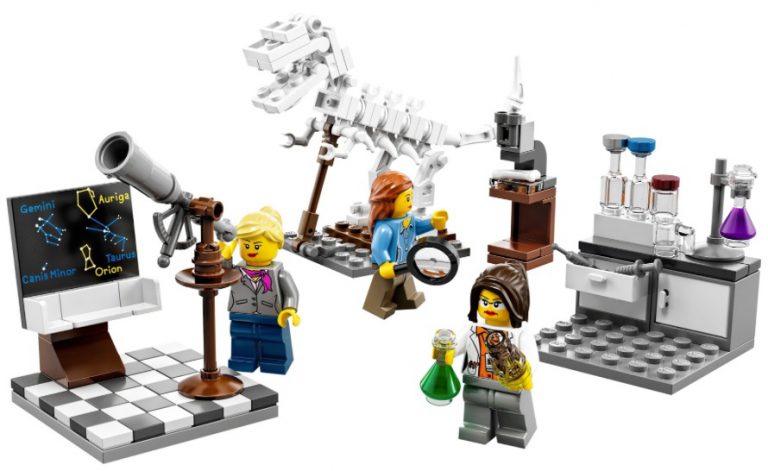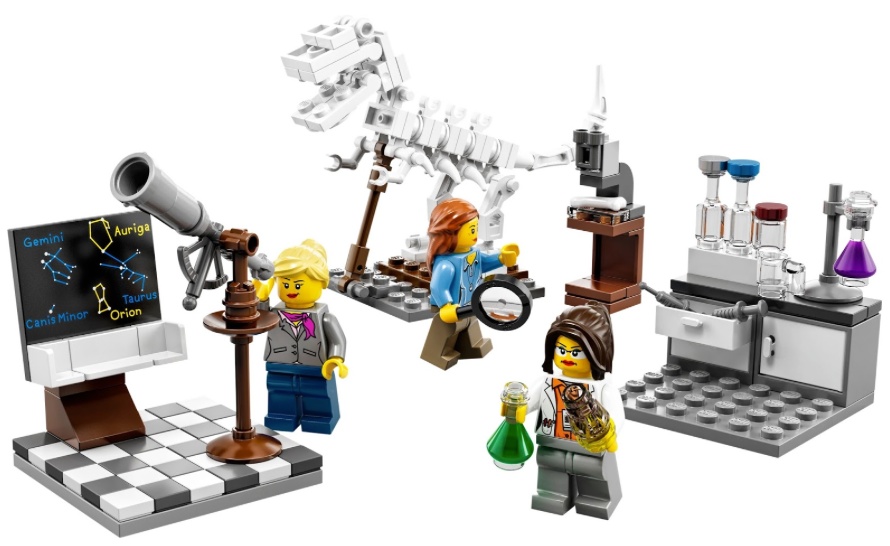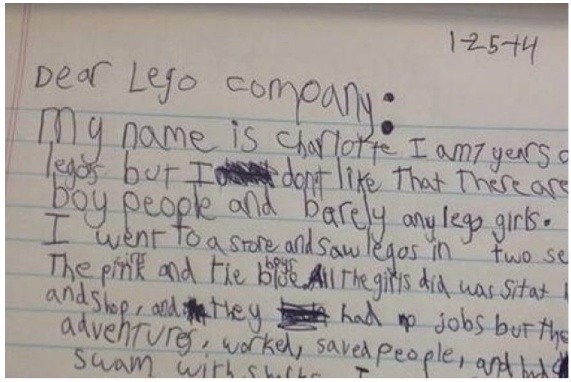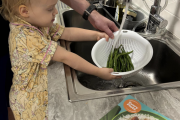Lego ‘Research Institute:’ Lego Launches The First Female Scientist Set


Lego ‘Research Institute:’ Lego Launches The First Female Scientist Set
Last week Lego launched the ‘Research Institute,’ their first-ever set to feature female scientist figurines. Featuring a miniature astronomer, chemist and palaeontologist the set is the pitch by geophysicist Ellen Kooijman on Lego Ideas, a platform devised by the brand which allows anyone to suggest ideas and garner support. She had noticed ‘a skewed male/female minifigure ratio and a rather stereotypical representation of the available female figures’ and wanted to make the sets more diverse.
According to research from the Scientific American, the ratio of all-time Lego figurines is roughly four males to every female. But of course, the scawreled handwriting of a sweet seven year old is what has really made this launch stand out. In a letter that went viral, Charlotte Benjamin told the company that although she had noticed that ‘there are more Lego boy people and barely any Lego girls.’

Not only were the numbers wrong, but what they did: ‘all the girls did was sit at home, got to the beach, and shop, and had no jobs,” while the boy figures “went on adventures, worked, saved people, and had jobs, even swam with sharks. I want you to make more Lego girl people and let them go on adventures and have fun, ok!?!’ There’s clearly a demand for it – the pitch on Lego Ideas generated well over the required 10,000 supporters, and the initial stock of the Research Institute sold out in only a few days.
But why are toys still so gender divisive, and does it even matter?
Well yes, because children learn from playing. What they learn, is that girls love pink, pastels, homes and being quiet, whilst boys are active, scientific, and big fans of blue. Walk into any toy store and you will see this gender divide, with the dolls, homes and craft sections of toy shops do seem to be very heavily focused on girls, whereas the science, construction and sport games are offered up for boys. McDonalds give a girls or boys toy with their Happy Meals (although the official policy line is that children have a choice). And even that most enlightened generation, the youngest parents – Millennials – are reinforcing gender stereotypes with the toys they buy for their children.
A study in the US by Exponential. Inc showed that female parents are more likely to purchase toys typically considered to be for girls, and the same pattern is seen by male parents.

This can only have the effect of ingraining stereotypes at a young age. What we learn early on in life will influence everything – attitudes and actions. Toys play an important part in defining gender roles, and are powerful symbols. Forming their own identity, children are receptive to marketing messages and the fantasy world that toys provide.
The campaign Let Toys Be Toys began at the end of 2012 as the result of a thread on parenting website Mumsnet about the explicit gendering of toys. Over a year the campaign has convinced 12 major retailers in the UK, including Boots, Toys R Us and Marks and Spencer, to remove “girls” and “boys” signage on toy displays, and in Australia last year, Thea Hughes and Julie Huberman began the Play Unlimited campaign, and quickly convinced Toys R Us to drop the boys’ and girls’ categories on its website, and have just launched a new online petition to stop typecasts being marketed to kids.
Playing and toys have a profound impact upon the roles and skills gained in early years, and so even career roles are likely to represent this. Chi Onwurah, an MP in the UK, actually called a parliamentary debate on gender-specific toy marketing, and believes that the fact that women are vastly underrepresented in STEM careers can be directly connected from the stereotypes they learn so young.
So what does the ‘Research Institute’ from Lego mean? It is sad that it has taken so long, and a sign of how all pervasive the gender bias is that most people have failed to notice. It’s natural and traditional is used as a justification, when actually it is just ingrained, and political advances over the last few decades haven’t been reflected in the toys.
We need to allow children to create different stories that reflect a society in which we live, and an inclusive society in which we want our children to live in – and equip them with the toys to do so.
Francesca Baker is curious about life and enjoys writing about it. A freelance journalist, event organiser, and minor marketing whizz, she has plenty of ideas, and likes to share them. She writes about music, literature, life, travel, art, London, and other general musings, and organises events that contain at least one of the above. You can find out more at www.andsoshethinks.co.uk and follow her at https://twitter.com/andsoshethinks










